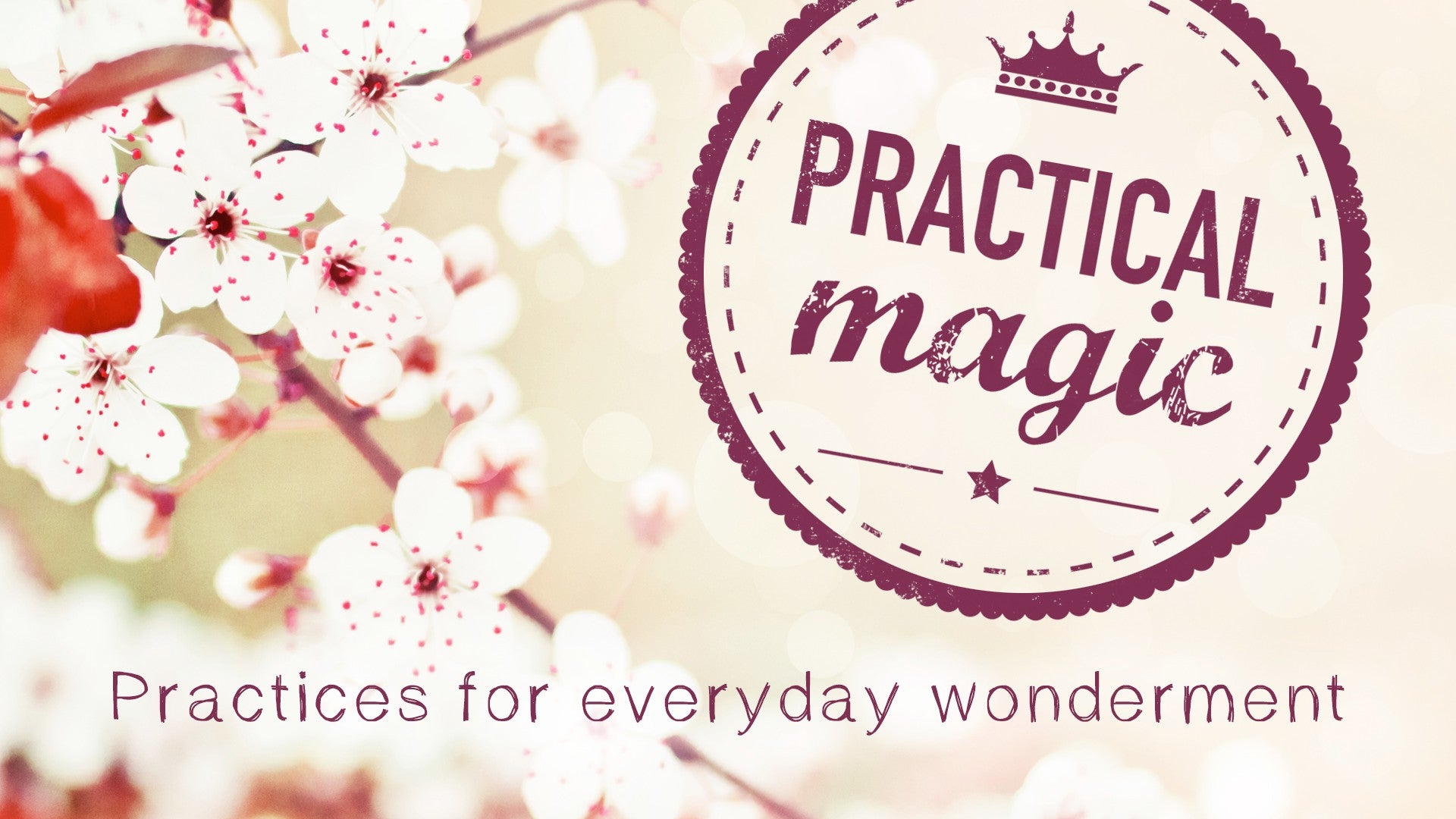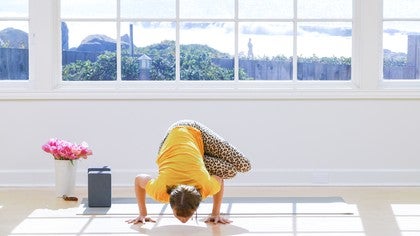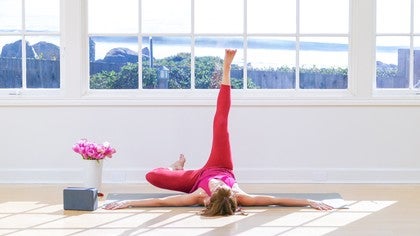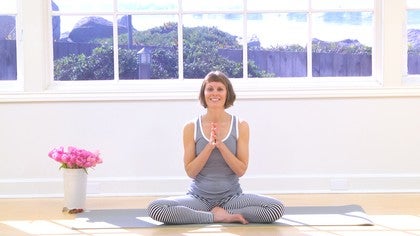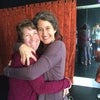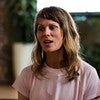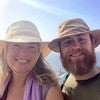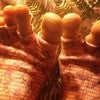Description
About This Video
Transcript
Read Full Transcript
Hi. I'm so glad you're here to practice. We're working in this sequence with finding space for softness and sweetness within stability, within structure, and we'll do that with some twists and some standing postures and some arm balance play. So I'm glad you're here. We'll come down onto the floor to begin, onto the back, in a shape of constructive rest. So you might organize the body with the soles of the feet on the floor and the heels about as wide as the sitting bones and you might notice that I'm like reaching back and feeling where my sitting bones are. You can do that too. It's useful. And then organizing so the knees are in line with the hips and the ankles. Turn the palms of the hands to face the sky and allow your body, invite your body to yield to this support that's already happening, just like. And once you really feel that support, relax into the length of the spine that's already happening. And with your own breath, with your own rhythm and pace of breath, as you breathe in, press the feet into the floor, press the small of the back into the floor. And as you breathe out, relax, come back to neutral. And as you breathe in, press the feet and the small of the back into the floor. And as you breathe out, come back to neutral. And as you do this, you know, we're going through our process of, you know, noticing what is required of our bodies to make this happen. How do I do it? And then noticing what we feel in the body as you move in this way. You might be drawn into the sensation of the back of the body being held. You might notice how we roll from the bottom to the top of the sacrum. You might notice the tiny movements in the back of the skull. And the next time that you're breathing in and pressing the feet and pressing the small of the back, the lumbar curve of the spine into the floor will just pause there and notice the engagement in the body. You might notice up the legs, into the hips, into the core. Taking a full and deep breath into this place. And as you breathe out, let go of all of the effort. And from here, we'll just sort of roll the head from the left to the right. Nice and easy. There's no right or way to do it than how you're already doing it. Noticing the sensation of the floor against the skull. And when you come to rest on the left side, we'll pause there and we'll bring the left hand, maybe the back of the hand, to rest on the right brow. Let your shoulders soften. Let your belly soften. We'll release the arm and roll over onto the other side of the head. We'll place the back of your right hand onto the left brow bone and let everything settle into the support that's already happening. Lots of ease. We'll release that hand from the brown. We'll bring the arms out to T, maybe lowering the hands a bit below the latitude of your shoulders. And then hugging the knees in toward the chest. And you might really sort of hug them in so the tops of the thighs are closer to the torso. And livening the feet. And as you breathe in, breathe into the fullness of the back of the body. And as you breathe out, start to lower the legs toward the right. So rolling over to the right. Breathing in back to the center. And breathing out, lowering the legs to the left. We'll do it a handful of times. And do what's easy on your neck and head. So your gaze might move in opposition to the knees. It might also move with the knees. I'm just letting this be really close to the center. And with your next breath in, we'll bring everything back to the center. You might sort of kick your own keister here, bouncing the heels, before exhaling and extending the legs toward the sky. And we'll organize the body so that the heels are stacked again over the sitting bones. The feet are alive, but the bones are heavy and settled into their sockets. And the hips and the sacrum are settled into the floor. And we'll invite the arms to extend in the same way. So they're parallel to each other and parallel to the legs. And again, like the hands are alive, the arms are alive, but everything is stable and settled. And if everything is so hard and rigid that you can't feel your skin, ease up. Maybe a lot. And if this is so overwhelming through your core that you are silently uttering a mantra that sounds a lot like the F-word, then the knees. A little or a lot. We're looking for that edge where we feel something, but where we're not overwhelmed by it. Go to the center of sensation. What is it? And then how far out do you feel it? And with an exhalation, look at the knees into the chest. Maybe with a sigh of relief. That's over. We'll just sway a little bit from side to side. And we're going to make our way towards standing. And you can do this in the way that makes sense for you. You can roll to one side and come up slowly, or you can experiment with rolling front to back. Don't worry if you don't make it. Just try something. So we'll roll all the way up. And you might pause in Uttanasana standing forward fold while you sort of commit to the feet making contact with earth. We'll press the feet into the floor purposefully, bending the knees. And with a breath in, start to roll all the way up to stand. And you might even sweep the arms, hands, and fingers toward the sky. And as you breathe out, bring everything back to the heart. And notice. And relax the effort of standing. And grab your blocks. Did I mention you might like to have blocks? If not, I will now. So bring your blocks together to the top of the bat. Organize your body again so your heels are beneath your sitting bones. And with a breath in, sweep the arms, hands, and fingers toward the sky. And as you breathe out, press the feet into the floor. Maybe let a bend happen in the knees as you dive forward to Uttanasana standing forward fold. You might place your hands on the blocks. They might be on the floor. As you breathe in, come up halfway, Ardha Uttanasana, and exhale fold. And with a breath in, we'll press the hands into the blocks, step the right foot back, and we'll organize the legs for a version of Uttiparsvakanasana. So a version of extended lateral angle that I call ostrich. And we'll turn the toes out slightly, lower the heel to the floor, and then we'll take both blocks and we'll walk them on an angle to the back right corner and beyond the mat. Placing the hands onto the blocks, pressing the feet into the floor with purpose. As you breathe in, lengthen the spine. And as you breathe out, let there be a little bit of softness in the heart. You might feel the torso move a little bit closer to the floor. And sometimes that's useful just a couple of times to breathe in and lengthen and breathe out and soften. Breathing in and lengthen and breathe out and soften. And we'll just sort of linger here for a couple of breaths. You might bring your forearms to the block. You might not. Pressing the feet into the floor. Engaging the glutes. You might even reach back and tell that that right booty to engage. From here, bring the hands back to the blocks if you've lowered and we'll breathe in and start to straighten the front leg, the left leg. So we move into sort of an angled trikonasana. Lengthen the spine. Soften the face. Use your right glutes to support you. And from here, press the hands into the blocks. We'll come up onto the ball of the right foot and we'll rotate the hips to square to the front of the mat into a lunge. Just let it be a nice, easy, loosey-goosey, gooey butter cake lunge.
That's a St. Louis thing. Google it. Not now though. Stay on your mat. And with a breath in, we're going to take your back leg, your right leg, bending the knee and we're going to hug it up close to the left side of your left foot and then lower down to sit. Make room for both of your sitting bones to make contact with earth. Hug the right knee in. Let everything sort of settle into the bottom of the bowl of the pelvis, the bottom of the bowl of the hips. You might wrap your right arm around the left leg as you breathe in, lengthen the spine. And as you breathe out, start to invite your face, your throat, your heart to twist while keeping the low body super stable. Both sitting bones making real contact with the floor. Left hand might touch the floor but don't lean on it. Just use it there to guide you. Soften the shoulders. For now, to start, we'll look over the left shoulder as you sort of settle into the shape. Sit back a little bit. We'll keep the body so from booty to neck the way it is and on an exhalation we're going to change our gaze to look over the right shoulder. Breathing into the fullness of your form and as you breathe out you might sort of affirm like I have a right to take up space. And as you do that, could there be a little softening in the left hip. With a breath in, we'll bring everything back to the middle. Here's where things get fun. Winding our way out. We'll take that top leg, the left leg, wind it back, ball of the foot into the floor and breathe out, press back to downward facing dog. Really feel free to move around there. With a breath in, we'll step the right foot forward between the hands. We'll place the hands onto the blocks, walk the hands to the inner edge of the right knee and lower the left heel down to the floor and we'll sort of begin this process of moving into ostrich. Strong legs. Ostrichas are strong as all get out. They're fast. So dig into those legs like ah feel the contact the feet are making with the earth and let there be a little bit of space for serendipity. Like think of what an ostrich looks like. It's so improbable. Breathe into the length of the spine. Breathe out and soften. Get to know the sensation in your body. What is it trying to tell you? Bringing the hands back to the blocks with a breath in. Let's straighten the right leg and we'll move into this angled trichonasana, angled triangle pose.
Very unorthodox. That's how we like it. Can you feel each of your toes making contact with earth? Press the hands into the block as you come up onto the ball of the left foot spinning toward the top of the mat and again this is where things get a little you know logistically interesting. Bend your left knee as you scooch it forward to the right side of your right foot. Settle in you know like settle into your nest. Hug your left knee into right knee into the chest with the left arm. Let your right hip become heavy. Your right sitting bone become heavy and as you breathe out beginning with the face start to look to the right. Look to the right with the throat across the chest. Stable from the solar plexus down and again like the lightest touch of the right hand on the floor. There's so much room here like to be in in relationship with your vibrant form and we do that when we allow each of our parts to have its own experience and keeping the body as it is we'll start to shift the gaze to the left and with a breath in we'll bring everything back to the center. We'll help this right leg to unwind and we'll press back to downward-facing dog. And from here we'll start to make our way toward a squat so we'll walk the hands toward the feet. Lower the tush toward the heels. Let there be softness in the feet. Softness in the ankles and so from here we're moving to a place that is slightly more complicated in its architecture but we'll be maintaining that sense of ease even and especially if things aren't easy and we'll do it by just letting the tailbone be heavy and that sense of stability from the tailbone to the solar plexus remain as we then walk our upper body our arms over to the left side and your right arm is gonna start to snuggle the outer edge of your left leg and we'll take some time just to get comfortable in this shape. So we're moving in the direction of Parsva Bacasana and the trippy thing about Parsva Bacasana, the first hundred times you do it, is that this wing over here is not supporting your butt. It thinks it should be doing that but it's not. So you're normal if you are feeling that way. So start to shift your weight toward your hands. Start to shift your gaze forward onto the floor and we'll just like feel what this feels like to shift, to gaze and to let more of the weight start to come into the hands and possibly your toes float up off the floor. Maybe they won't. It's not necessary because this is really about the twist and it's really about staying stable from here to here while we start to relax into a sense of openness in the upper back, the upper register of the spine. So let's try that again. Hands come to the floor. Knees start to just snuggle each other. Shift the weight into the hands. Shift your gaze forward on the floor. Maybe the feet float up. Don't push. Come back down. So while we're preparing for side two, give yourself a moment.
Notice. Shake it off. What do you feel in your body? Left side, right side, top side, bottom side. Notice that. And as we move into side two, think about this. Like this shape is all about the ease. You can't muscle your way into this no matter how much you want to. You can't push. It has to be slow. It has to be spacious. Not forceful. So we'll come back to a little squat. Cozy up your feet. Cozy up your knees. And this time we'll walk the upper body to the right side. So your left wing is getting cozy with the outer edge of your right leg. Hands are pretty wide here. Contact with the floor. Just start to, you know, play with shifting weight into the hands and shifting the gaze forward on the floor. Do that a couple times. Just start to shift. Shift your weight into the hands. Shift the gaze forward on the floor. And we're just sort of like leaning over until the feet leave the floor almost inevitably. So there's no push. There's just almost like you're a little teapot. Tip me over. Pour me out. I will say that along those lines there will probably be a fair number of face plants involved here. I've had my fair share. Maybe we'll, maybe one will happen today. So shifting, shifting. Feet leave the floor. You might, oh, can you put your chin on the floor? Oh, tip back up. Nice. And then always sit back. Notice. Shake it off. What do you feel? And so we'll take one of the blocks and come down onto the floor on our back. And we'll be, we'll come back to this familiar shape, constructive rest. As you breathe in, press the feet into the floor. Press the small of the back into the floor. Pause there. Notice the engagements. Press the feet into the floor. Lift the hips using the legs just enough to slide your block in its lowest position under the sacrum. And so when I say that, for most of us, unless you wear very low pants, the entire block will be below your waistband of your pants. For stability, you might hold onto your block. If you're already feeling stable, turn the palms of the hands to face the sky. And with a breath in, draw the knees in the general direction of the chest. And as you breathe out, extend the legs toward the sky. And you might let a little sort of shimmy happen to invite everything to settle. Again, we have lots of room here to encourage ease. You might bend your knees a little or a lot. You might change the width of the feet. You might change the angle of the legs. And with a breath out, hug the knees toward the chest. You might let a little sway happen from side to side. Slowly release the feet back to the floor. Press them into the floor and lift the hips just enough. And just for a minute, let there be this just delicious stretch from the top of the knees across the crease of the hip to the collarbones as you then move your block out of the way and roll the spine down. We'll bring the arms a bit away from the body, palms up or down. Do whatever feels easiest in the shoulders. And as you breathe in, draw the right knee toward the chest. And as you breathe out, extend that right leg toward the sky and just give it a little shake. We'll let an external rotation happen in the hip as you bend the knee and bring the right ankle to the top of the left knee. Let the sacrum be heavy. And with a breath out, we'll start to lower the outer edge of the left leg toward the floor. As we move the sole of the right foot toward the floor, your gaze might start to shift toward the right. And we're inviting or encouraging this sense of blooming or external rotation through the right hip. That thigh, that inner right thigh is moving away from the floor. Ease. And with a breath in, we'll bring everything back to the middle, back to the center. Breathe in, draw the right knee toward the chest. And as you breathe out, extend it toward the sky and just give it a little wiggle. A jiggle. Lower that foot to the floor. And notice what you feel. And on a breath in, we'll invite the left knee toward the chest and exhale, extend that leg toward the sky.
Maybe a little wiggle happens. Externally rotate the left hip, bend the knee, bring the ankle to the top of the right knee, bottom of the right thigh. And on an exhalation, we'll start to lower the low body toward the right as you look to the left. Again, we're just sort of blooming through the hip. Inner left thigh is moving away from the floor. Saturated in ease. And as you breathe in, bring everything back to the middle, to the center. Inhale the left knee toward the chest. Exhale it toward the sky. Exhale the leg toward the sky. Let a wiggle jiggle happen. And just notice right side of the body, left side of the body. Inhaling, taking up space. And exhaling, filling that space. We'll start to move in the direction of a shape of rest, which is whatever shape is restful to you. So it can be on the back, on the side, on the belly, legs up the wall, sitting perhaps. And let everything settle in to the bones. Be with the rise and the fall of the body with the breath. Stay here as long as you like. Linger in whatever sensation is beckoning you.
And when it's time to come out of the shape, begin slowly with a pulsation of movement. A natural pulsation of movement that spreads across the body almost inevitably. And taking your time to come back to your seat, your luminous seat. Invite your hands to make their way to your heart. I notice what bringing the hands to the heart makes you feel. Thank you so much for sharing this space and your practice and yourself. Love.
Practical Magic
Comments
LOVE!
 Thank you, dear Sarafina! So happy to hear. It makes me smile to know we are practicing together!
Thank you, dear Sarafina! So happy to hear. It makes me smile to know we are practicing together! All love, Kelly
 You are so very welcome, Elke! Thank you for sharing your experience. It definitely shifts things when we imagine that shape to be about the twirl... the delicious twist, with the possibility (but not necessity) of feet leaving earth, doesn't it? Much love to you.
You are so very welcome, Elke! Thank you for sharing your experience. It definitely shifts things when we imagine that shape to be about the twirl... the delicious twist, with the possibility (but not necessity) of feet leaving earth, doesn't it? Much love to you.
You need to be a subscriber to post a comment.
Please Log In or Create an Account to start your free trial.
